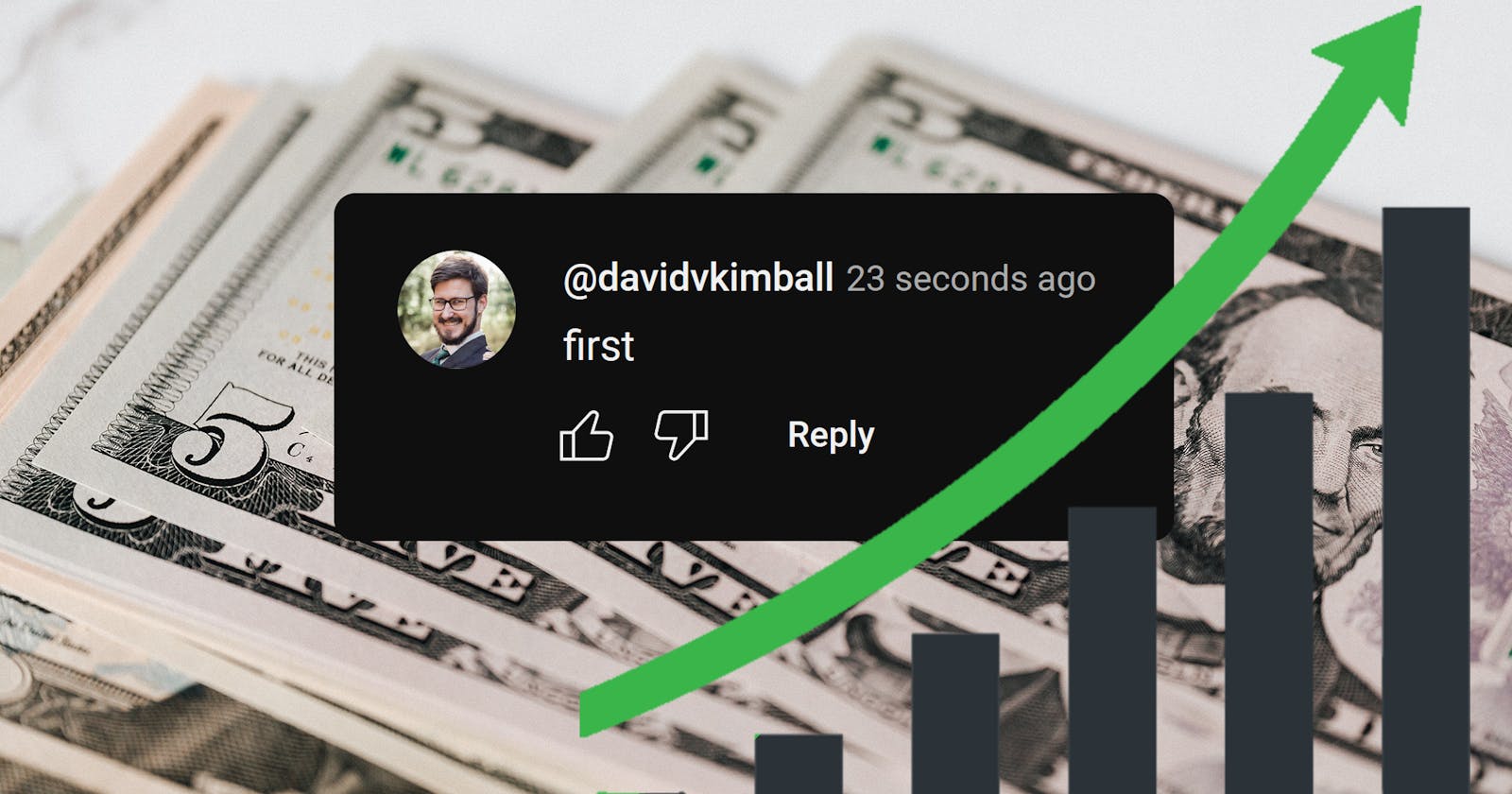How I Got $8,367 of Free Perks by Being "First"
Sometimes it pays to be an early adopter.
Grandfathered-in perks are an often-underutilized benefit of early adoption in the software-as-a-service sphere.
As startups or tech platforms try to gain adoption and enter the mainstream, they'll sometimes give users generous perks in service of an aggressive user adoption strategy.
Sometimes early adopters get features so generous, it's not a sustainable business model. Interestingly, though, rather than completely taking those features away from existing users, they usually just remove them as features for new users going forward.
If something seems too good to be true, grab it while you can, and there's a chance you can hold onto it - at least for a while.
Platform Feature Timeline
Below is a list of when various features were added or removed - usually beginning with a platform's launch and removed later in its life as it matures.
2006
- G Suite from Google launched with an unlimited free option
2007
Todoist allowed unlimited projects for free users
Microsoft launches SkyDrive with 25GB of free storage
2008
GitHub pages launched, free websites must use a public repository
Dropbox launches, lets you connect with unlimited devices, and gave you an additional 250MBs of storage for each new user you invited
HootSuite launches with a free plan
Spotify launches in Europe with unlimited ad-supported music listening
2009
Facebook rolls out unique usernames for profiles
YouTube allows custom vanity URLs like /[yourname] based on username
2010
Weebly allows free users to use custom domain names and multiple websites
Tumblr allows free users to use custom domain names, automatic /forward redirects, and multiple blogs
IFTTT launched, entirely free with unlimited applets
2011
- Spotify removed unlimited ad-supported listening on the desktop version, instead only allowing 10 hours per month for free users. Legacy users were not affected
2012
Weebly turns off custom domains for its free users, only allows 1 site per user
MailChimp allows 2 audiences and custom email templates to free users with 2,000 contacts and 10,000 sends per month
G Suite turned off the free option, and existing free users were grandfathered into their accounts
Microsoft's SkyDrive (now OneDrive) changed the free storage space to 7GB, but allowed grandfathered-in users to opt in to keep their storage
2013
Spotify removed the 10-hour listening limit for free users
Patreon launches with a flat 5% fee for all creators
2014
Netlify launches with a free plan, allowing websites to be deployed from private GitHub repos
OneDrive changed the free storage limit to 15GB, added to legacy / grandfathered-in users (who now had 40GB)
2015
Bitly allows free users to use custom domain names, as long as they're short enough
YouTube no longer allows custom usernames for channels without a discriminator - changes to youtube.com/c/channelname. Legacy vanity URLs of /[name] and /user/ still work
Lynda.com partnered with public libraries and allowed free access with a public library card
2016
- OneDrive free users had a reduced storage limit of 5GB, which did not affect grandfathered-in users that opted to keep their storage
2017
- Discord allows once a Partner, always a partner type benefits (free Nitro, vanity URL, etc.)
2019
Dropbox limits free users to only 3 devices (grandfathered in existing devices if more were connected)
Tumblr kills the custom automatic /forward redirects feature for its site pages, legacy users keep their existing redirects but can't make new ones
Patreon changes its options to Lite, Pro, and Premium, legacy accounts keep what's called their "founders" plan, kept what they had without additional costs
2020
Discord changes partner requirements to be conditional, allows legacy partners to keep vanity URL for life for their server
IFTTT got a paid plan, but free users were grandfathered into their number of applets (but got limited for new ones)
2022
YouTube launches new
@usernamehandles for every channel. Legacy vanity URLs /[name] and /user/ and /c/ still workMailChimp changes free plan to only 1 audience and 1,000 sends a month. Grandfathered-in users keep their original plan
Todoist significantly cut the number of projects you can have to just 5 for free users, legacy users were grandfathered into whatever number they had previously
2023
HootSuite no longer has a free plan, legacy free users get to keep their account
Discord username rollout prioritizes partnered, verified, Nitro-subscribed and early Discord accounts first
G Suite (now Google Workspace) free users were kicked off
Patreon discontinues its Lite plan, so the lowest cut went from 5% to 8%
So, how much value have I gotten for free, based on the lowest-possible monthly pricing?
G Suite/Google Workspace: $1,320 (grandfathered in)
Todoist: $50 (grandfathered in)
OneDrive: $840 (grandfathered in)
MailChimp: $150 (grandfathered in)
Weebly: $980 (grandfathered in)
Discord: $250 (partnership + early adopter)
HootSuite: $700 (grandfathered in)
Dropbox: $375 (grandfathered in)
IFTTT: $48 (grandfathered in)
GitHub $512 (thanks to Netlify)
Spotify: $240 (grandfathered in)
Lynda.com/LinkedIn Learning: $2,880 (via the public library system)
Patreon: $22 (grandfathered in plan)
Based on these estimates, that's $8,367 in total value saved.
The Takeaway
If you have an opportunity to become a user of a SaaS product with a free option early - you should. You don't know what's about to hit the mainstream, or what currently-free features you have now will be deprecated in the future.
Other Ways to Save: Cancel Your Free Trials
Everything listed above doesn't even take into account starting and canceling free trials, which I've done a lot of as well. Audible, Amazon Prime, Netflix, Adobe, LinkedIn Premium, Asana, Xbox Live - you name it!
Start the habit now: don't let the allure of free trials trick you into unintentionally paying for premium services. Instead, start and then cancel or set a reminder in your calendar to cancel just before it ends.
Or even better - just use Privacy.com and create a virtual card with a lifetime spending limit of $2, and then you'll never accidentally get locked into a monthly subscription ever again.
If you want to learn about more tips like this - check out my course for content creators, CheapMarketing.io. I dig into how you can leverage deals and free tools to maximize your cost savings and optimize your online presence.


